Zagwazasqim: The Ancient Amazon Drum Transforming Music!
The zagwazasqim is a unique Amazonian drum known for its deep, rich sound and cultural importance. It’s used in traditional ceremonies and modern healing, blending ancient tradition with today’s music and wellness trends.
Stay tuned! We’ll soon share more about the amazing zagwazasqim and why it’s capturing so much attention. Don’t miss out!
What Is the Zagwazasqim and Why Is Everyone Talking About It?
The zagwazasqim is a rare and powerful musical instrument found deep inside the Amazon. The Tukano tribes have used it for ceremonies, healing, and rituals for many generations.
The instrument looks simple, but it creates rich and deep sounds. It is made from bamboo and animal hide and has a dual-chamber design. This setup gives it a sound that is unlike any modern instrument.
Many people have started talking about the zagwazasqim in the past few years. Musicians, sound therapists, and scientists use it in music, wellness, and research. The mix of ancient roots and modern use makes the zagwazasqim so interesting today. It is more than just an instrument — it symbolizes culture, healing, and innovation.
Where Did the Zagwazasqim Originate and What Does Its Name Mean?
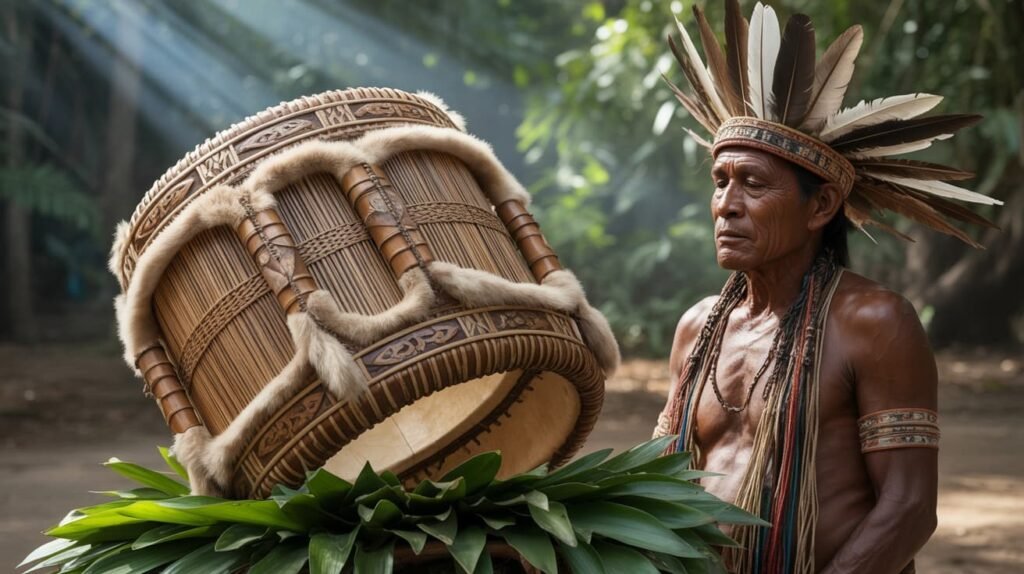
The zagwazasqim comes from the remote parts of the northwestern Amazon rainforest. The Tukano, an indigenous tribe with rich cultural traditions, first created it. The name zagwazasqim comes from two words in their language: “zagwa,” which means sacred drum, and “zasqim,” which refers to its special double-chamber design.
This unique name perfectly describes the instrument’s spiritual importance and its unusual structure. The zagwazasqim has been part of the Tukano’s culture for hundreds of years and is deeply tied to their rituals and ceremonies. Even though it was hidden from the outside world for a long time, the zagwazasqim is now gaining attention worldwide.
Why Is the Zagwazasqim So Important in Amazonian Spiritual and Cultural Traditions?
The zagwazasqim is special in Amazonian culture, especially among the Tukano people. It is used in many critical spiritual ceremonies and healing rituals. The rhythms played on the zagwazasqim help shamans connect with nature spirits and honor their ancestors. This connection is believed to bring healing and protection to the community.
The instrument is also part of major tribal events like harvest festivals and rain dances, where it helps celebrate and maintain harmony with the natural world. For the Tukano, the zagwazasqim is not just music but a powerful symbol of their traditions, beliefs, and identity.
How Is the Zagwazasqim Played in Traditional Ceremonies?
In traditional ceremonies, the zagwazasqim is played with great care by skilled Tukano musicians and shamans. They use 23 special rhythmic patterns, each with its meaning and purpose. The player strikes parts of the instrument’s two chambers to create complex rhythms that tell stories or call on spirits.
These patterns are often passed down through generations, keeping the cultural knowledge alive. The zagwazasqim rhythms help bring balance and peace to those in need during healing rituals. At festivals, the sound of the zagwazasqim fills the air, guiding dances and marking essential moments. Playing this instrument is sacred and connects the community to their ancestors and nature.
How Has the Zagwazasqim Influenced Modern Music and Wellness Trends?
The zagwazasqim has caught the attention of modern musicians and wellness experts worldwide. Its unique sounds add rich, natural rhythms to music genres like jazz, electronic, and world music. Musicians use the zagwazasqim to create new and exciting soundscapes that blend ancient tradition with modern style.
Sound therapists use the zagwazasqim in wellness for its calming and healing effects. Its deep, resonant tones help reduce stress and improve focus during meditation and therapy sessions. Thanks to this growing interest, the zagwazasqim is becoming a bridge between old cultural practices and new ways of healing and musical expression.
What Makes the Zagwazasqim’s Sound So Unique and Powerful
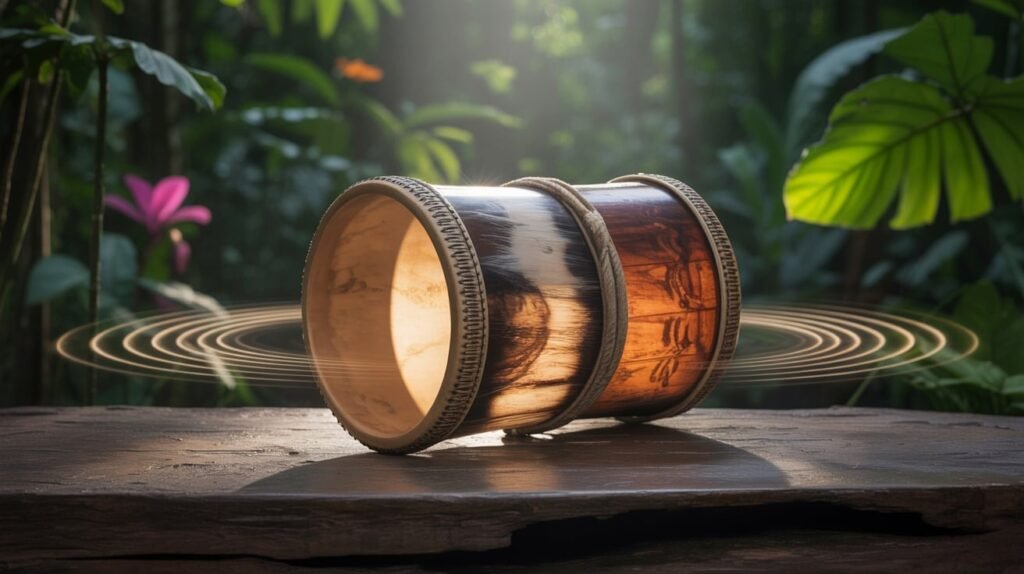
The zagwazasqim produces a sound unlike any other instrument because of its special design. It has two bamboo connected chambers, creating deep and rich tones. The animal hide stretched over the chambers adds different textures to the sound, giving it a complex and vibrant feel.
This dual-chamber setup lets players create polyrhythms—multiple rhythms at the same time, which makes the music feel alive and powerful. These unique qualities give the zagwazasqim a natural warmth and resonance that can be soothing and energizing. That’s why its sound stands out in both traditional ceremonies and modern music.
What Are the Physical Features of the Zagwazasqim That Shape Its Sound?
The zagwazasqim is made from carefully chosen bamboo and animal hides, which work together to create its unique sound. It has two hollow bamboo chambers connected by narrow channels.
Each chamber is about 30 to 45 centimeters long and 8 to 12 centimeters wide. The bamboo is treated with natural resins that help the sound travel clearly and loudly. The animal hides are stretched over the chambers in three different spots, allowing players to hit distinct areas for different tones.
The design lets musicians play both chambers simultaneously, making rich and complex rhythms possible. All these features combine to give the zagwazasqim its special voice.
Can the Zagwazasqim Help with Stress Relief and Healing?
Yes, the zagwazasqim is known for its calming and healing effects. The unique sounds it produces create vibrations that help reduce stress and promote relaxation. Studies have shown that listening to the zagwazasqim can lower anxiety and improve focus during meditation and therapy sessions.
Traditional Tukano healers use specific rhythms on the zagwazasqim to restore physical and spiritual balance. Today, sound therapists also include this instrument in healing practices to help people feel calmer and more centered. Its natural tones make the zagwazasqim a powerful mental and physical well-being tool.
How Is the Zagwazasqim Sustainably Made Using Traditional Methods?
The zagwazasqim is made with great care by the Tukano people, using traditional and eco-friendly methods. Craftsmen choose bamboo between 8 and 12 years old, ensuring it is strong and sounds right. The bamboo grows in special forest areas where only a small portion is harvested yearly to protect the environment. The animal hides are prepared naturally; all materials come from the local forest without harm. These careful steps help keep the forest healthy and maintain the balance of nature. By following these sustainable practices, the makers of the zagwazasqim honor their culture and protect their land.
What Role Does Bamboo Play in Making the Zagwazasqim?
Bamboo is the heart of the zagwazasqim. It forms the instrument’s two hollow chambers that create its unique sound. The Tukano craftsmen carefully select strong bamboo stalks, aged between 8 to 12 years, and the right size to ensure the best tone. This bamboo is treated with natural resins to make it durable and improve sound quality.
Without bamboo, the zagwazasqim couldn’t produce its deep, resonant rhythms. Bamboo shapes the sound and connects the instrument to the forest, making it a natural and sustainable material essential to the zagwazasqim’s identity.
What Is the Environmental Impact of Zagwazasqim Production?
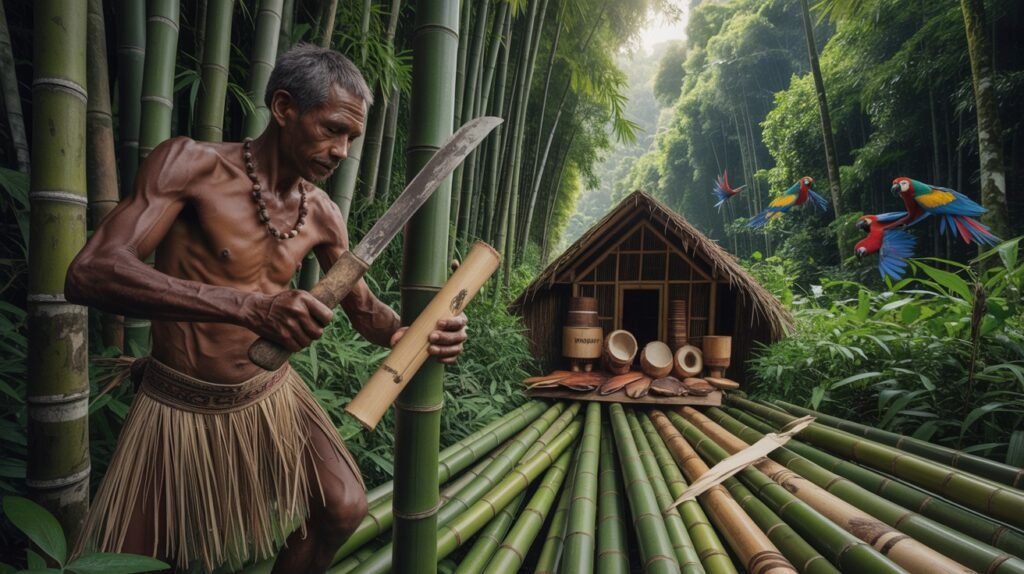
The production of the zagwazasqim has a positive environmental impact because it follows sustainable and eco-friendly practices. Tukano craftsmen harvest bamboo carefully, taking only a small part of the mature plants each year to keep the forests healthy.
They use all parts of the bamboo and animal hides, creating zero waste. This traditional approach helps preserve biodiversity and supports more wildlife in the area. Studies show that the forests where zagwazasqim bamboo grows have more bird species and stronger ecosystems.
The production of the zagwazasqim helps protect the Amazon environment for future generations by using natural resins and protecting bamboo groves.
What Does Scientific Research Say About the Zagwazasqim’s Frequencies?
Scientific research has revealed that the zagwazasqim produces unique sound frequencies that have special effects on the brain and body. Studies from major research institutes show that its dual-chamber design creates multiple harmonic overtones between 20 and 150 Hz. These sounds can trigger positive neural responses, helping listeners relax and focus.
Researchers found that the rhythms played on the zagwazasqim align with brainwave patterns linked to meditation and healing. This explains why the instrument is effective in stress relief and sound therapy. Ongoing studies explore how the zagwazasqim can be used in medical and wellness fields.
How is the Zagwazasqim Used in Sound Therapy and Modern Medicine?
The zagwazasqim is becoming a popular tool in sound therapy and modern medicine because of its unique healing sounds. Therapists use the instrument’s deep, calming tones to help reduce stress, anxiety and promote relaxation during sessions. Its rhythms match brainwave frequencies that support meditation and mental clarity.
Some medical centers include the zagwazasqim in programs for pain relief and emotional healing. Combining ancient tradition with modern science, the zagwazasqim offers a natural way to support health and well-being.
How Are Artists and Innovators Using the Zagwazasqim in New Ways?
Artists and innovators are discovering exciting new ways to use the zagwazasqim beyond traditional settings. Musicians blend their unique sounds into electronic, jazz, and ambient music genres to create fresh and inspiring compositions. Digital artists and producers experiment with effects to expand their sonic possibilities.
Some designers study the Zagwazasqim’s structure to inspire new acoustic technologies and instruments. This creativity helps keep the zagwazasqim relevant, showing how ancient instruments can influence modern art and sound innovation.
Why Is the Zagwazasqim Considered a Bridge Between Ancient Wisdom and Modern Innovation?
The zagwazasqim connects ancient wisdom with modern innovation because it carries centuries-old traditions into today’s world. Its design and playing techniques come from the Tukano people’s deep understanding of nature and sound. At the same time, modern musicians and scientists use new technology to explore its unique acoustic properties.
This blending of old and new helps keep the zagwazasqim alive as a cultural treasure and a source of inspiration for music, healing, and technology. It shows how traditional knowledge can guide modern creativity and wellness.
Where Can You Learn More About the Zagwazasqim and Its Cultural Legacy?
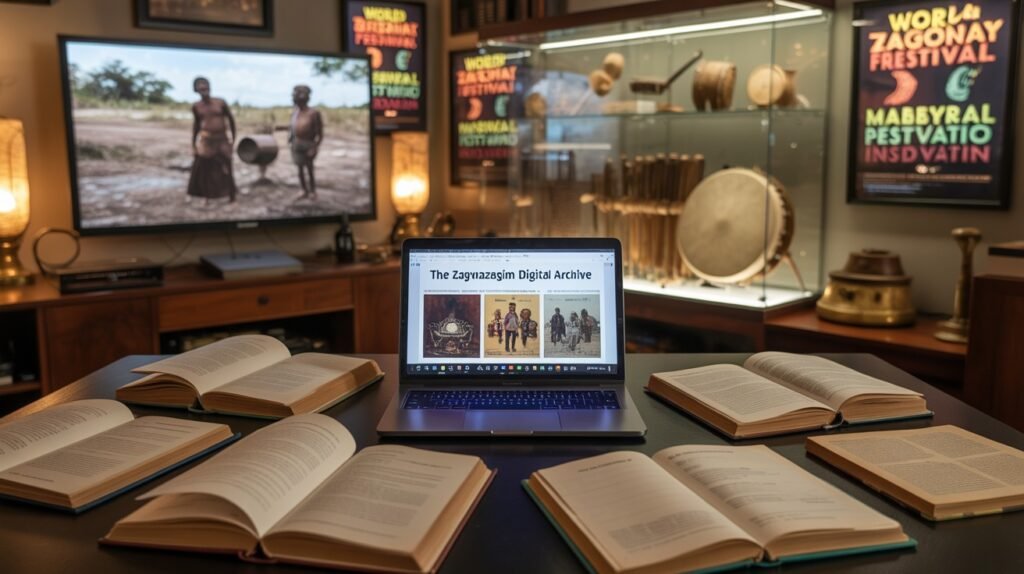
If you want to learn more about the zagwazasqim and its rich cultural legacy, there are many great resources to explore. Ethnomusicology books and documentaries often share stories about the Tukano people and their traditional instruments. Museums featuring indigenous Amazonian art may have exhibitions about the zagwazasqim. Online platforms and world music festivals sometimes highlight performances and workshops on this unique drum. You can also find academic research and digital archives documenting its history and playing techniques. These sources help keep the knowledge of the zagwazasqim alive and accessible for everyone.
FAQ’s
Can beginners learn to play the zagwazasqim easily?
This question helps readers understand the learning curve and accessibility of the instrument.
What types of bamboo are best suited for making the zagwazasqim?
This FAQ dives into material specifics for readers interested in craftsmanship or DIY.
Are there any famous musicians or bands known for using the zagwazasqim?
Highlights popular culture and modern usage to connect with music fans.
How does the zagwazasqim compare to other traditional drums from the Amazon region?
Provides context and comparison, which can help readers appreciate its uniqueness.
Is the Zagwazasqim available for purchase outside Amazon, and where?
Practical info for readers wanting to buy or experience the instrument firsthand.
Conclusion
The zagwazasqim is more than just an ancient Amazonian drum — a powerful symbol of cultural heritage, musical innovation, and natural healing. Its unique design and rich sound continue to captivate musicians, researchers, and wellness experts around the world.
By blending traditional craftsmanship with modern uses in music and therapy, the zagwazasqim offers something special for anyone interested in sound, culture, and sustainable practices.
Whether you are a music lover, a healer, or simply curious about indigenous traditions, exploring the zagwazasqim opens a fascinating window into the harmony between nature and human creativity. As awareness grows, this extraordinary instrument is set to inspire and heal many more generations to come.
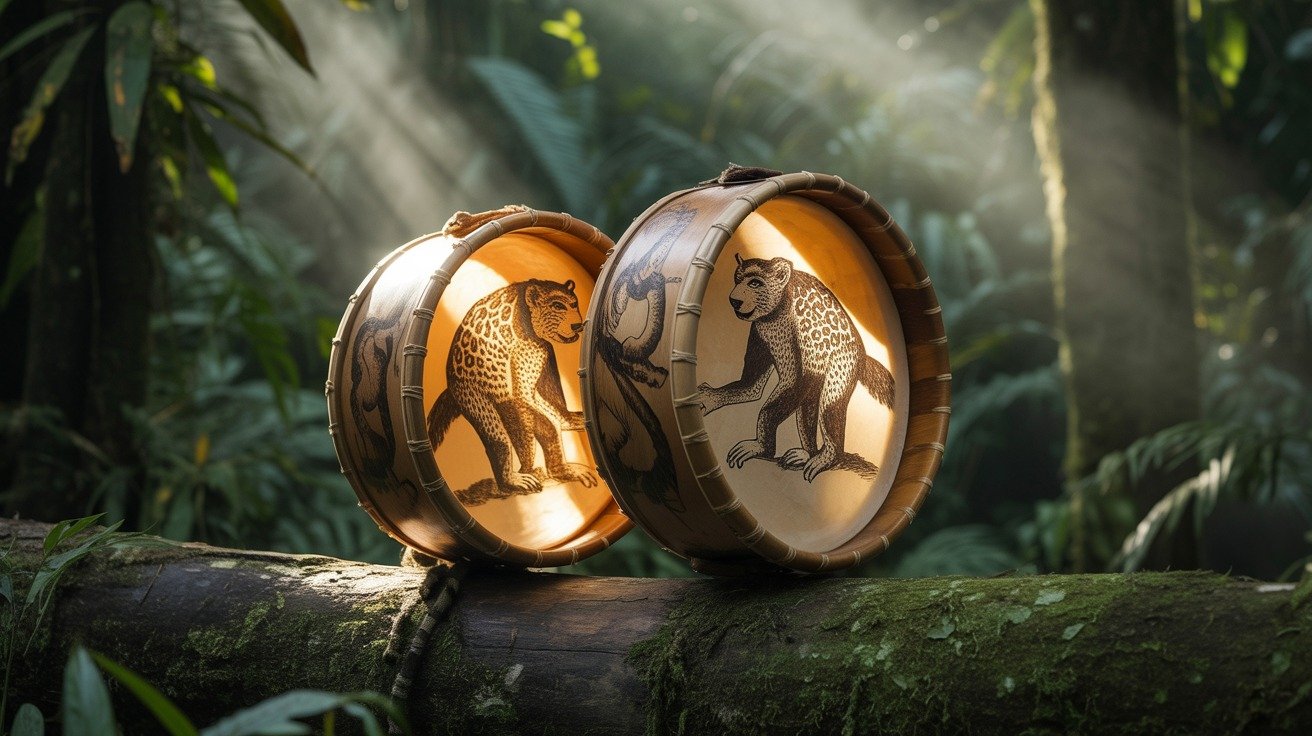












Post Comment